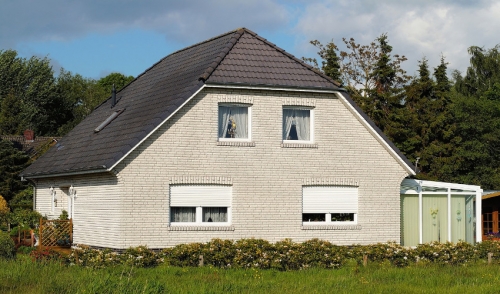
Energy prices seem to be rising every year. Furthermore, the impact of energy consumption has lasting effects on the environment. Though there’s not much we can do in regards to reducing the prices of the energy we consume, there are ways to reduce how much we consume. In turn, these energy-saving methods can reduce the impact on the environment.
Energy.gov has many suggestions that we’ve included in the following home energy savings checklist:
- Set the temperature of your hot water heater to the warm setting (120°F). This is safer for your family as well as being cost-effective.
- If not already there, install an insulating blanket around your water heater. Additionally, insulate any exposed hot water pipes. These steps alone can pay for themselves in the first year.
- Have your furnace professionally maintained each year. If replacement is recommended, make sure you look for the ENERGY STAR™ label when selecting a new furnace.
- Replace your incandescent light bulbs with compact fluorescent lights (CFL) or LED lights. CFL bulbs generally use one quarter the amount of electricity as standard incandescent bulbs. They last much longer too.
- If you have a desktop computer, turn off the monitors when not in use. Adjust the power options on your computer so that it goes into sleep mode when not in use. When the time comes to replace your desktop, consider a more energy efficient choice such as a notebook. You can still use your monitors by way of a docking station.
- Unplug unnecessary equipment that drains energy when not in use. For example, cell phone chargers coffeemakers, printers, videogame consoles, etc.
- Start washing clothes in cold water. During the summer months, consider drying them outside.
- Install a programmable thermostat. This will help regulate temperatures in your home according to your schedule, optimizing the times when heating/cooling is most important.
- During the winter, make sure that you open the south facing curtains during the day to allow sunlight to naturally heat the interior of your home. During the summer, close the same curtains during the day to preserve the cool air from the previous night.
- Make sure that you replace or clean filters such as those for your furnace, air conditioner and heat pump.
- When replacing any appliances, make sure that you choose those with an ENERGY STAR™ label. This alone can cut your energy bills by up to 30%.
- Inspect your home’s windows. If possible replace old leaky windows with new energy efficient models. Otherwise, apply rope caulk or plastic film to older windows.
- Inspect your home’s weatherstrip around windows and doorways. Replace as necessary.
- Look for other forms of air leaks in the home. Don’t forget to check around holes drilled for pipes and wires from the outside, dryer vents, gaps around chimneys and recessed lights in insulated ceilings.
- Don’t forget about your attic door. An attic door cover can reduce a lot of heat loss. While you’re up there, inspect your attic’s insulation. If the insulation is either even with the floor joists or below them, it’s probably a good idea to add more.
- Study your utility bills. Target the biggest energy consumer and seek effective ways of reducing costs/consumption.
- You can beautify the outside of your home while reducing air-conditioning costs by planting shade trees and shrubs around your house—especially on the western side.
By following the above checklist and taking a “whole-house” approach to saving energy, you can rest assured that you are maximizing your chances of saving energy and spending your money more wisely.

Comments